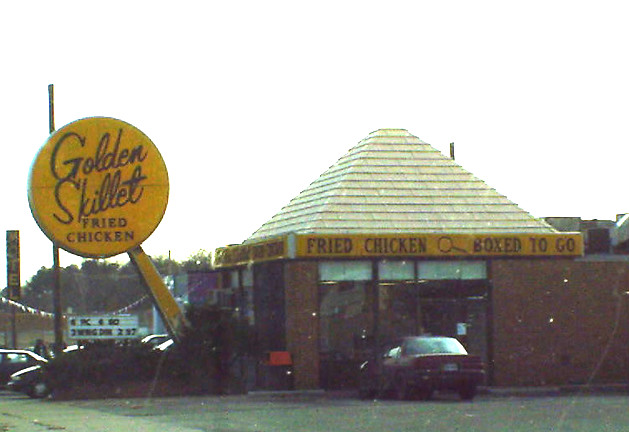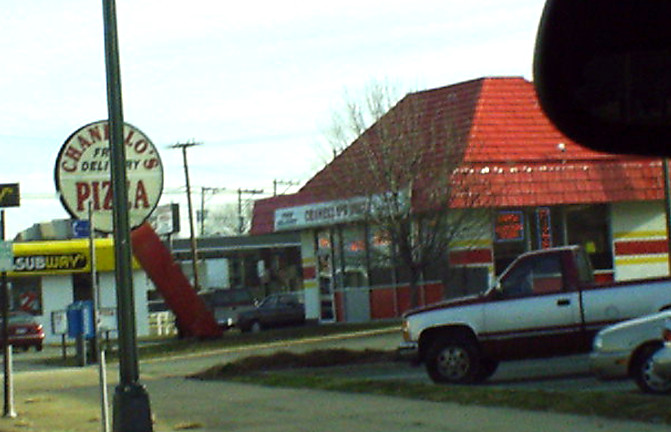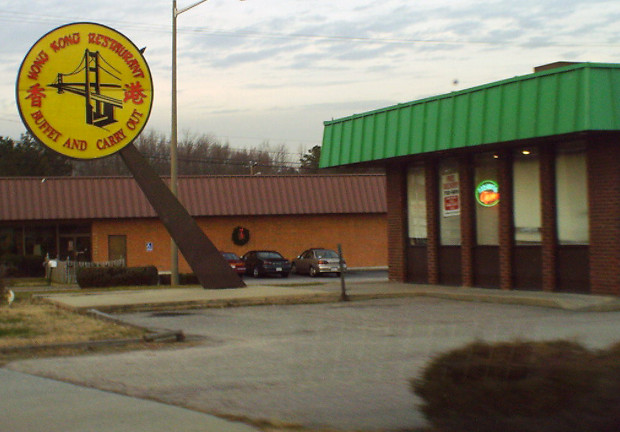All that aside, we did find a lovely home in Petersburg, a house that was, in many ways, the finest we have ever owned. It was located in "Walnut Hill", a somewhat posh part of the city, which had developed in the early 20th century. Most of the streets were named for Virginia plantations - ours was Shirley Avenue - and most of the homes were built in the Colonial Revival style, many, ours included, incorporating millwork and lumber salvaged from older homes in the commercial downtown being razed to make space for expanding warehouses and business interests.
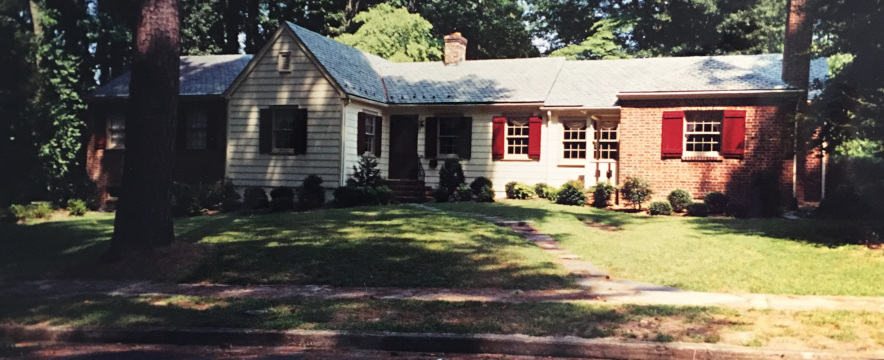
Our street was a short, dead end street with three houses along one side. The other side was a ravine with the remains of civil war earthworks and a small creek extending along that side and turning around the end of the street. The street itself ended with the entrance to our driveway. Here's a photo of the road ending at our gate and the driveway continuing. The drive curved around the back of the house to enter the garage underneath the living spaces. The curving driveway was bordered with low brick walls and azaleas broken by a gate opening to a set of stone steps down the side of the hill to the creek. From time to time someone with a metal detector would wander the surrounding woods looking for artifacts in the old earthworks, but otherwise, it was a quiet street.
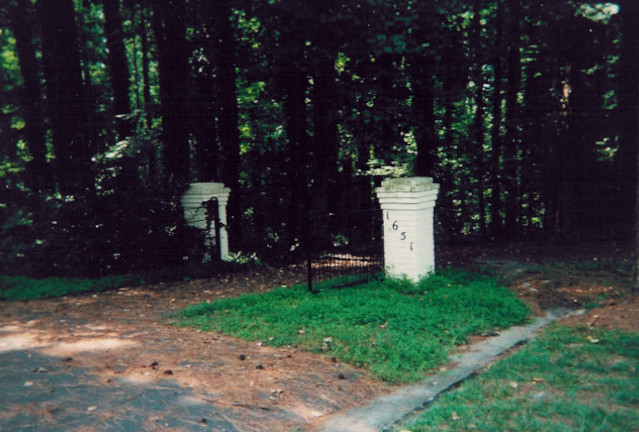
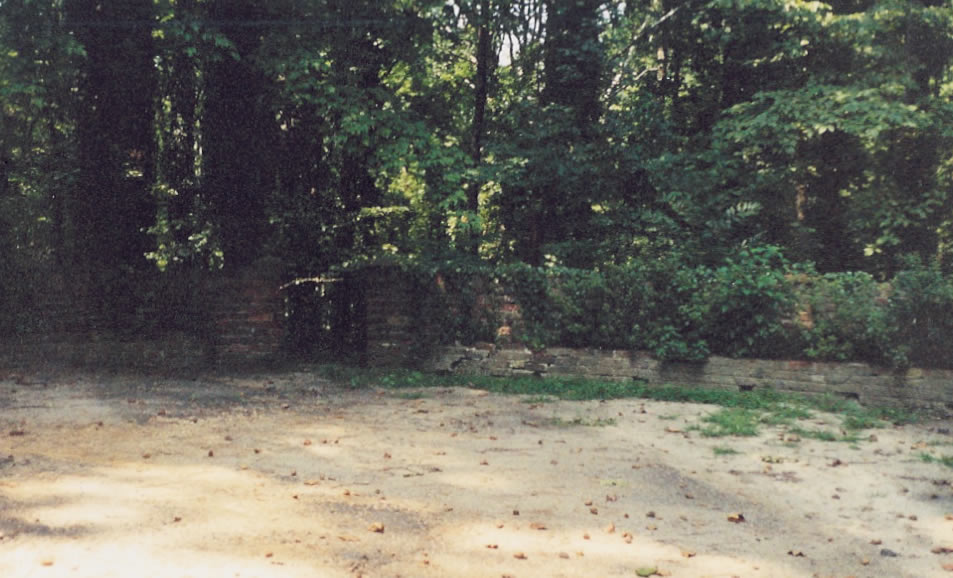
The house had been build in 1929 and expanded in the early 1950's. It was quite lovely home and very well built. The yard had curving brick walls and tall trees for summer shade. The trees were 80 to 100 feet tall, many the same species we were familiar with from New Hampshire, but were much faster growing in the south. One leaning tree was overhanging the house, and when we had it removed, it measured out about 110 feet long. Fortunately, I still had my chain saw, and it soon became firewood for the two fireplaces in our new home. It was a lot smaller pile that the fifteen cords we used to burn each winter in New Hampshire, but it lasted a bit over two years in Petersburg. Most of the trees in the woods around our house were heavily infested with invasive vines, but after two years of clearing them, they were free of vines.
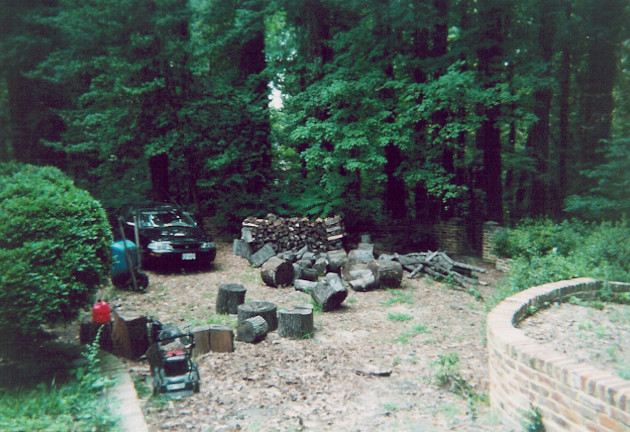
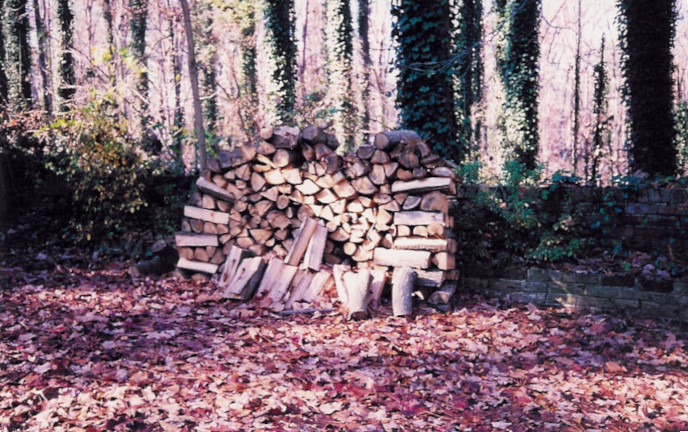
The front of the house from the street. The roof is slate and the brick walls are solid, Flemish bond, set upon a poured concrete foundation that had thee foot thick walls up to ground level. The library is in the right hand section and had a separate entrance. It was paneled in solid walnut, had buit-in walnut shelves, its own fireplace, and solid walnut doors to its half bath, closet, and adjacent rooms. It appeared to have been an office and the house was said to have been originally built for a lawyer. The outside door of the office/library had heavy brass hardware which duplicated the hardware from the front door of the Shirley Plantation in Charles City, Virginia, one of the oldest plantations on the James River and still in operation. Beside the steps to this entrance were two iron cannon balls embedded in the ground. It must have been a very impressive office in its day.
A couple of pictures of the front of the house and a few of the library.


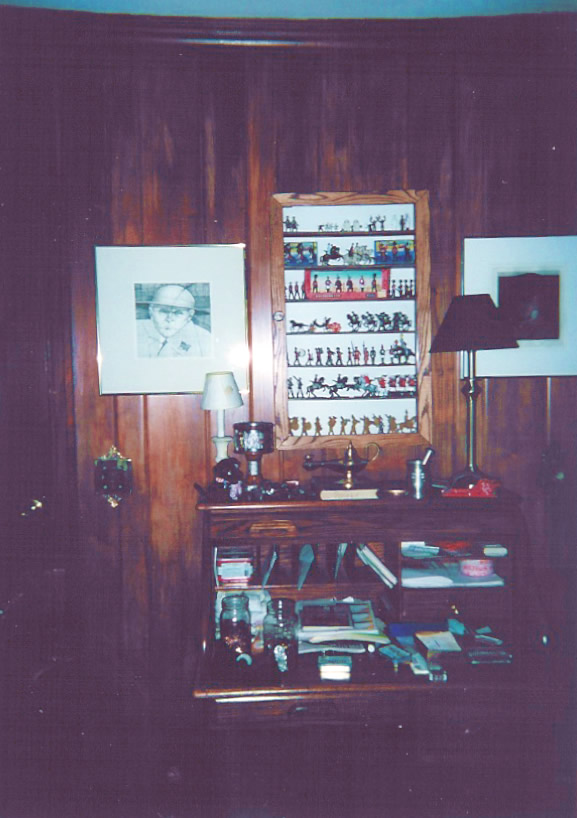
The floors in the older part of the house were different in each room. The living room was done in yellow pine "hearts of pine", the dining room in wide white pine, and the library in white pine pegged with walnut pegs. The house had been "decorated" shortly before we bought it, and it was move in ready. There were lovely window curtains in the rooms with fancy valences. All we had to do was add wide wooden plantation style blinds to a couple rooms. Our furniture seemed to fit perfectly as if made or chosen for each space we wanted to put it. We put one dresser in the living room and there were already wall sconces to hold the lights for it.
Here are some photos of the inside of the house. First the small foyer by the front door, then a picture of the living room fireplace with millwork that appeared older than the house and probably salvaged from an older home downtown.
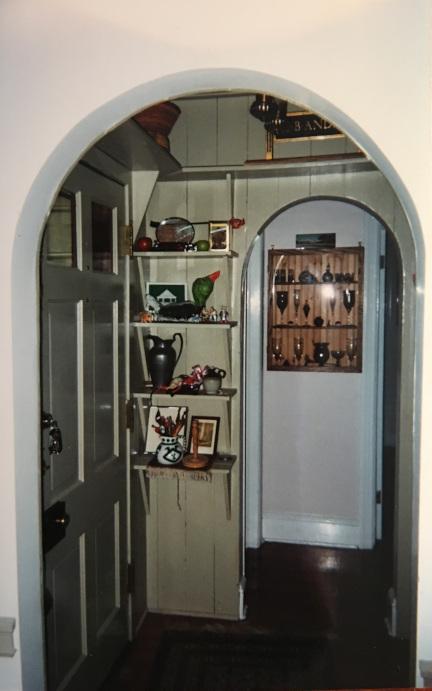
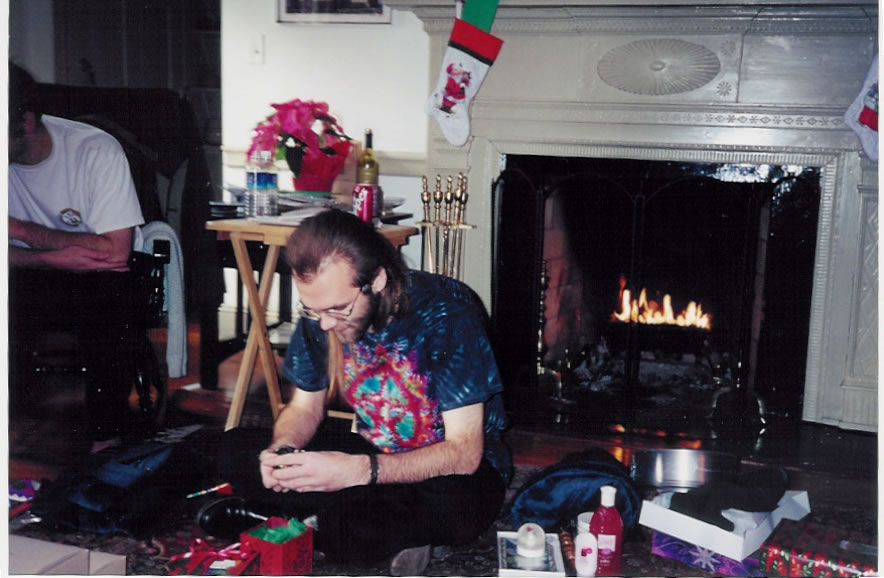
Here's a shot of Tom and Dad relaxing by the fire at Christmas time, and another of the living room.
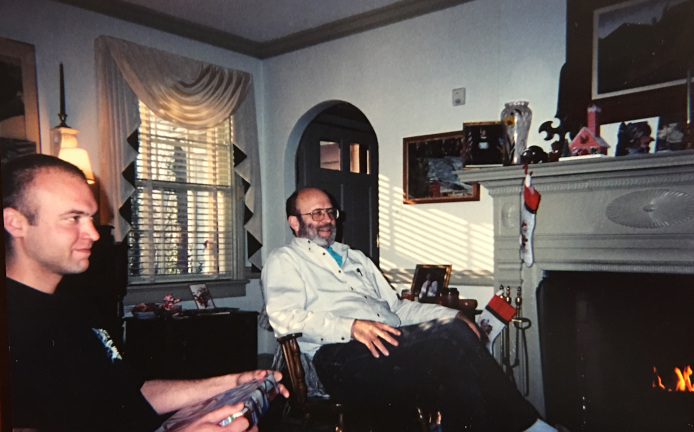
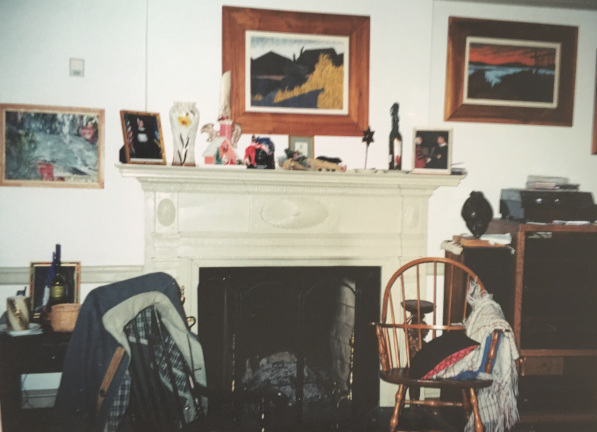
Then some pictures of the dining room and a couple pictures of some of the wainscotting and the step down from living room to dining room. With railing.
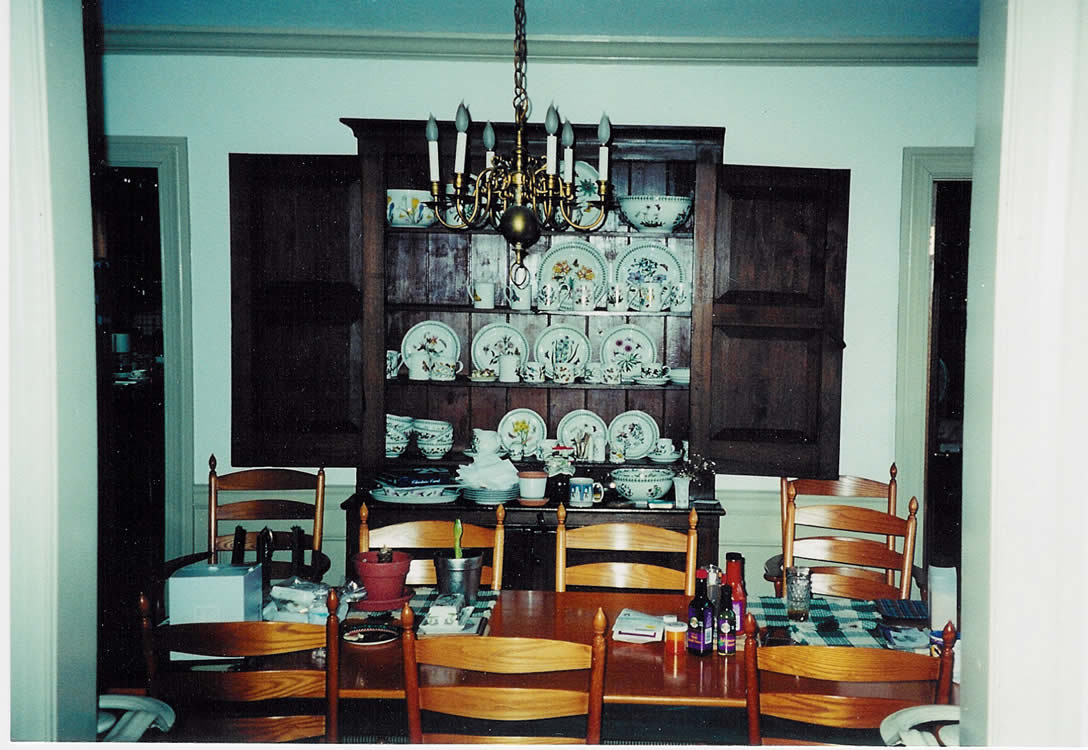
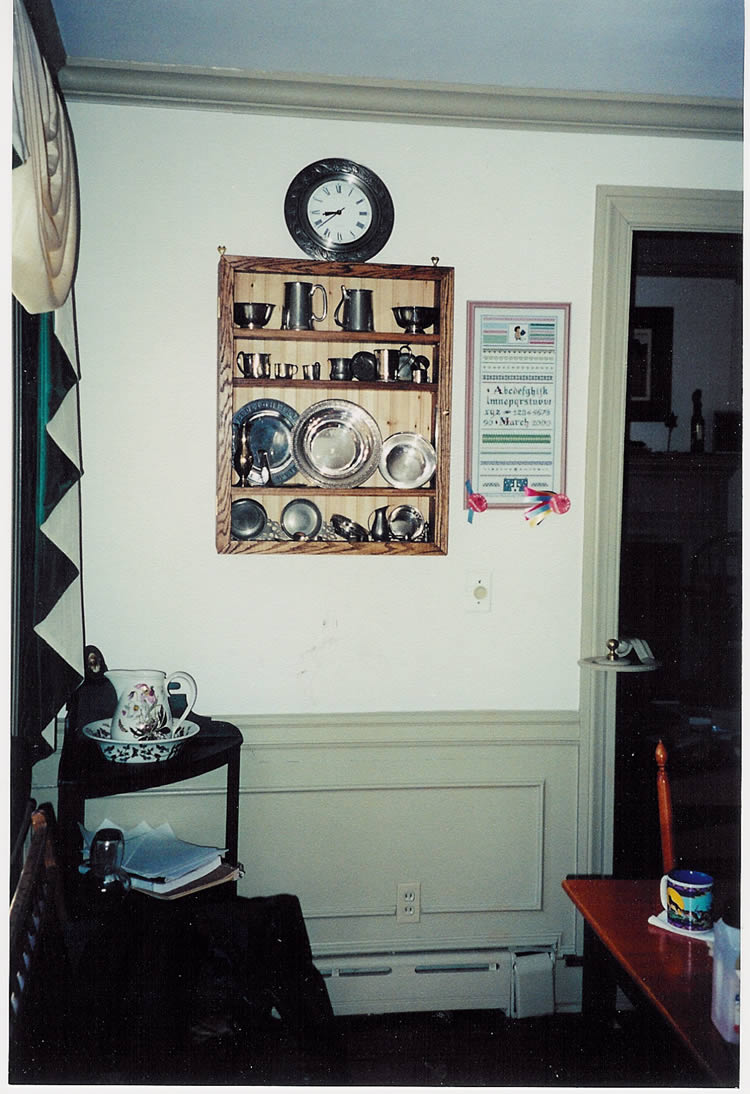
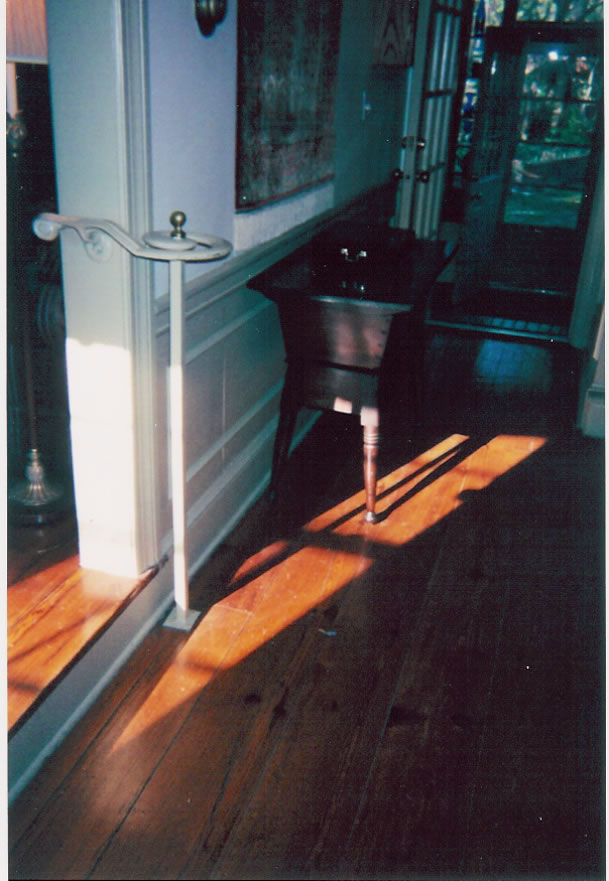
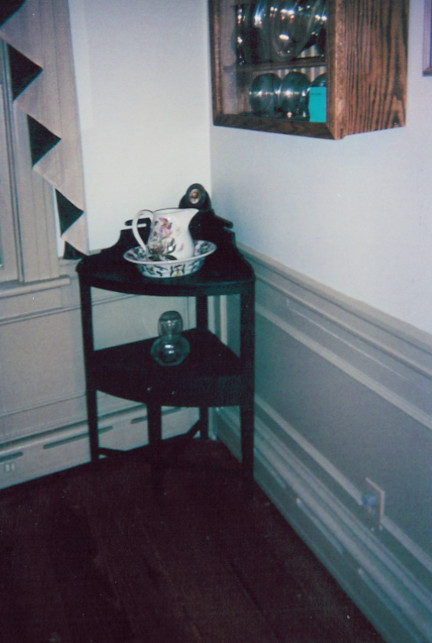
The part to the left of the front door was added in the 1950s and expanded the living space to include a master bathroom, a second bathroom room, and a small side room. The original house had two bedrooms and a bath. This part of the house was floored in typical mid twentieth century red oak flooring, and the walls were real plaster on metal lath. The garage was below this part of the house and the floor of the house/roof of the garage had metal trusses for joists.
I soon had a small wood shop, lumber storage, and a ship model work bench set up and running in the basement. The lovely porch on the rear of the house - a "Florida Room" in realtor-speak - got turned into an office when I began working for Amgen in 2001.
The ship model work bench. That's the Vandalia in process on the bench.
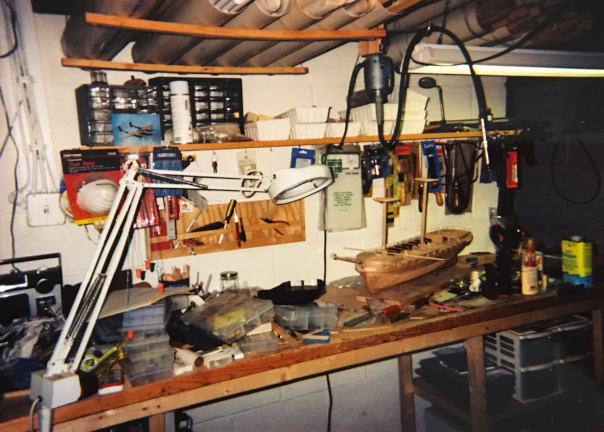
The first "home office" on the porch.
>
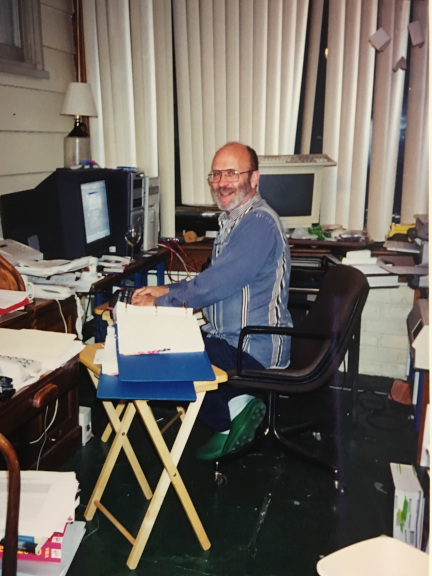
The grounds around the house were spectacular. We had a neighbor on one side, and one across the back fences, but were otherwise surrounded by tall timber, except for the expansive yards with serpentine brick walls and older stone walls as well.
Here's a shot taken from our front porch looking across the steet to the woods.
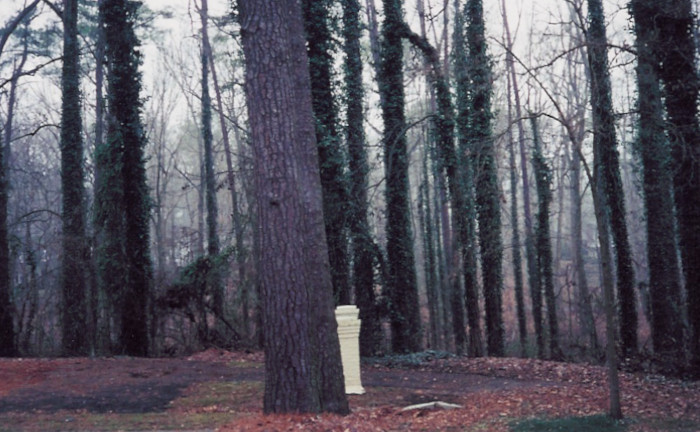
Here's a picture of the rebuilt wall and the brick path leading around the side of the house to the back porch and the back yard. To the left of that path, the side of the house was planted with camellias which bloomed profusely. There are a couple pictures of the camellias, too.
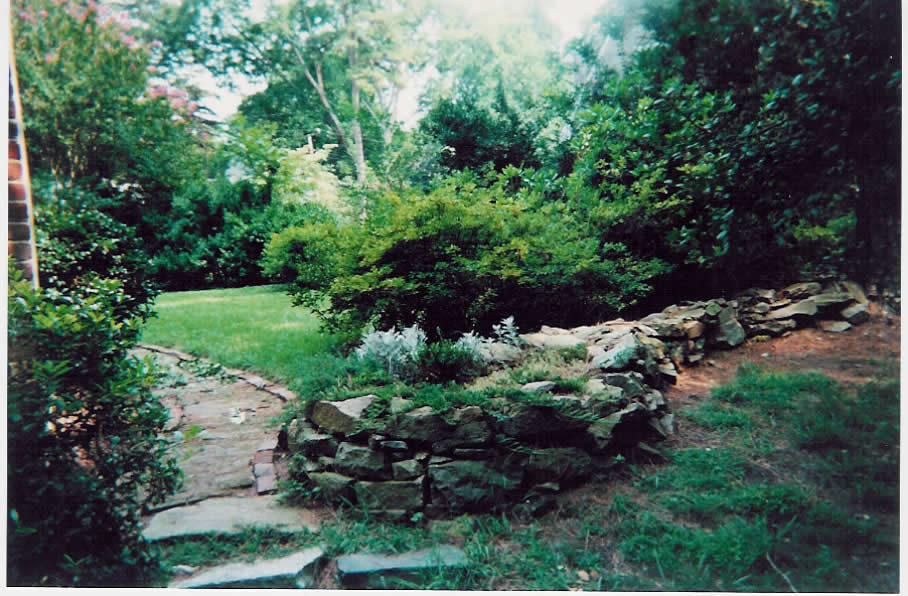
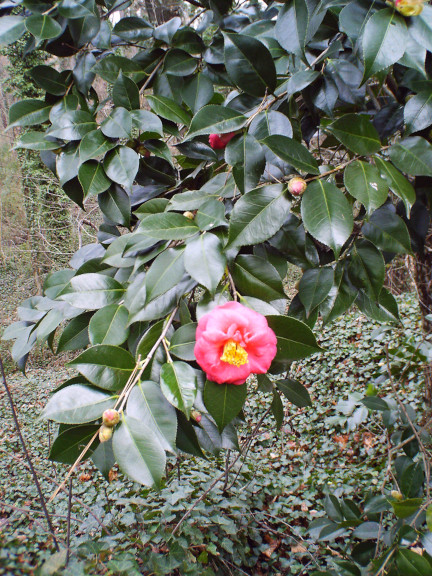
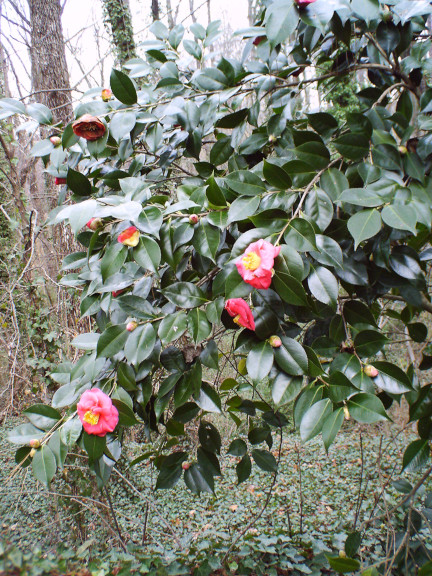
When we moved in, the back yard needed a lot of work. There were existing brick retaining walls beside the driveway that needed to be rebuilt and some raised brick planting beds also. We added a couple brick raised beds for an herb garden and a vegetable garden. As we cleand up the yard, removing years worth of layers of decayed leaves, we uncovered a flag stone area in the yard. The leaf mold leaf mulch we used to fertilize soil in the raised beds, and the first year we grew tomatoes there, the plants grew eight feet gall.
The back yard in summer was lovely to look at, but prime mosquito country. Also, the deep shade and acidic soil made a grass lawn nearly impossible to maintain, so we had started converting back lawn to a moss lawn but had not completed that by the time we left in 2003.
There was a alley behind the house. Petersburg had never (yet) abandoned their alley ways so utilities entered through the alley and once a week, a trash truck backed down the alley to collect our trash. There was a white wooden fence with a gate wide enough to admit a car at the back of the yard. All very civilized. Folks in the newer, fancier, wealthier parts of the city lacked the luxury of an alley and placed their trash cans on public display at the front of their houses weekly.
There were also two old street lamp posts on the property. They had been gas lights from the old part of the city, and a former owner had acquired them and installed them in the yard. We never got around to re-activating them.
Here are a lot of pictures of the back yard, the gardens, and the back of the house.
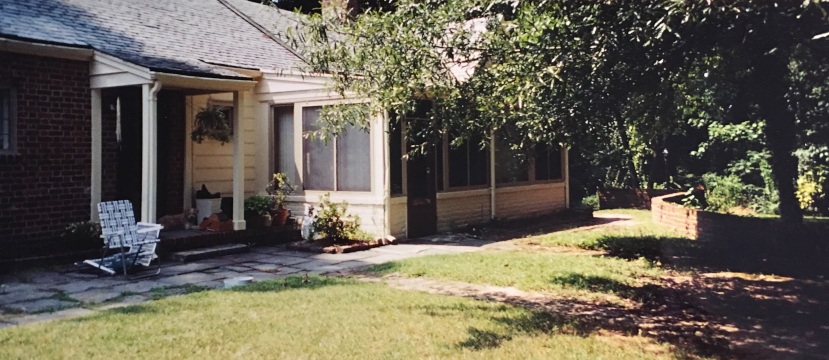

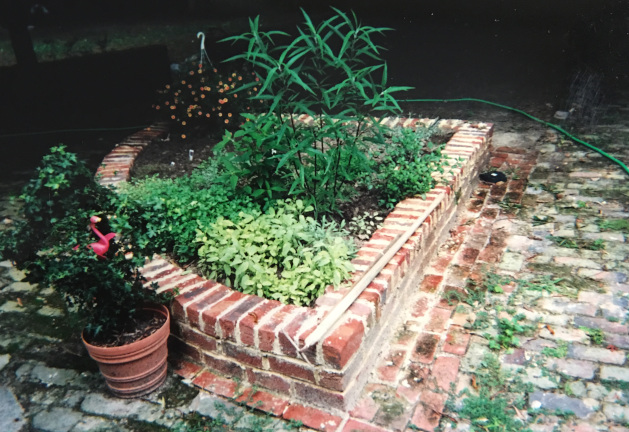
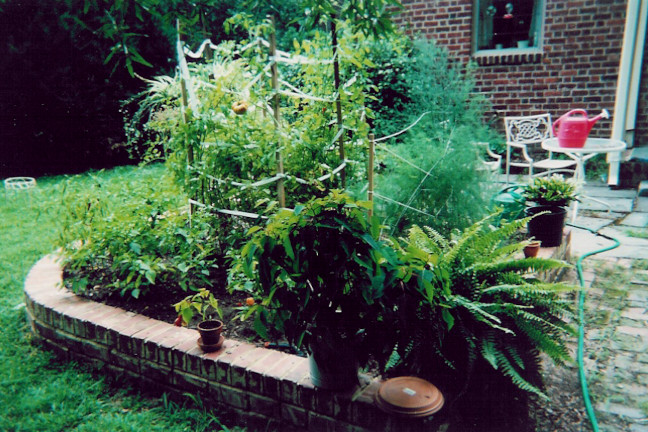
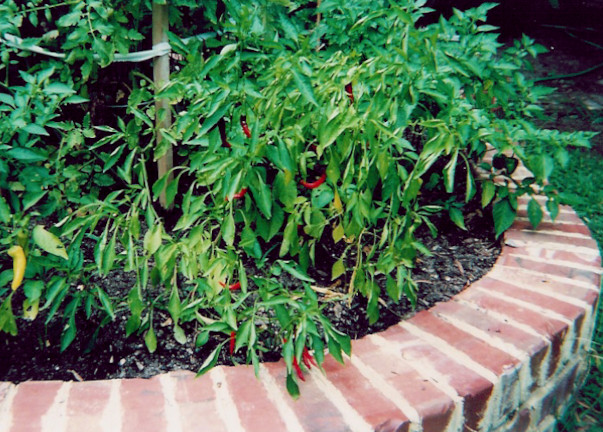
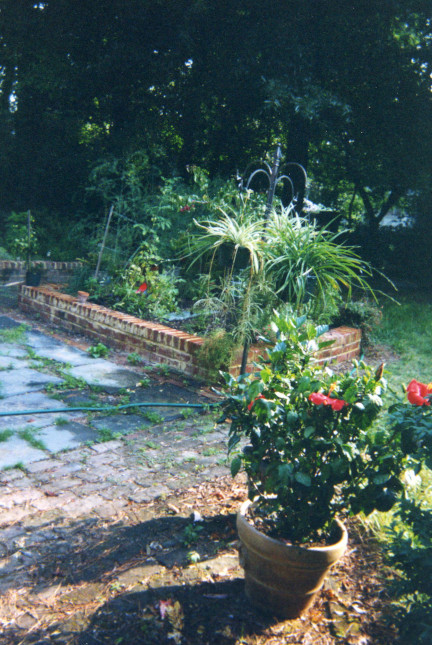
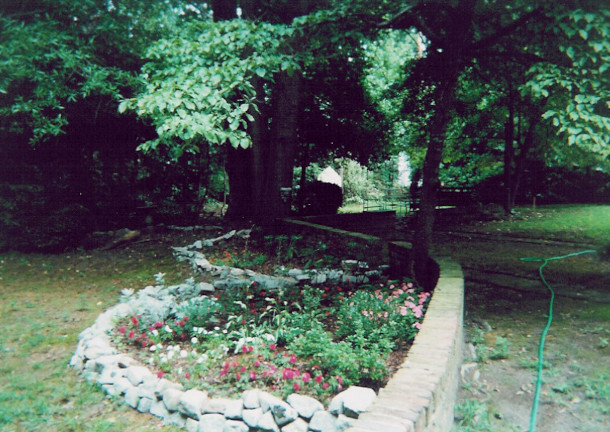
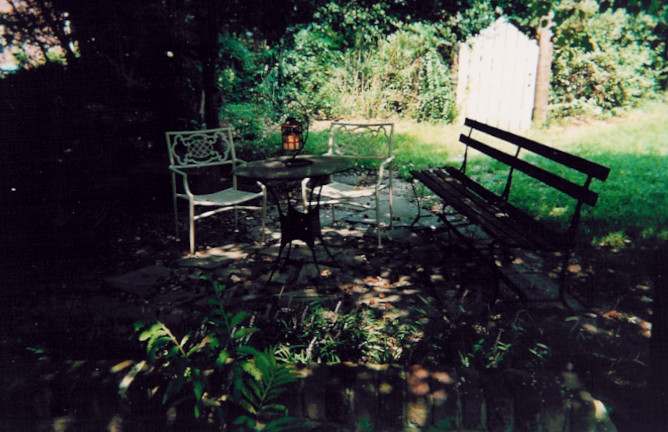
The backyard in Fall.
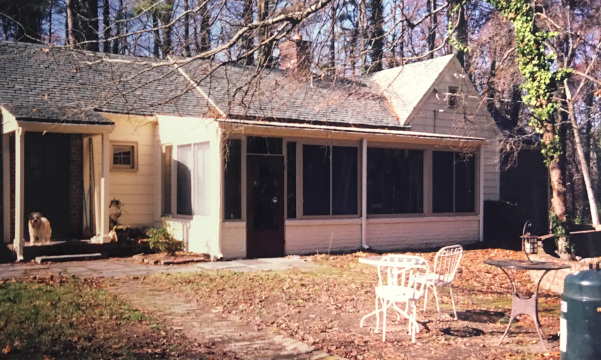
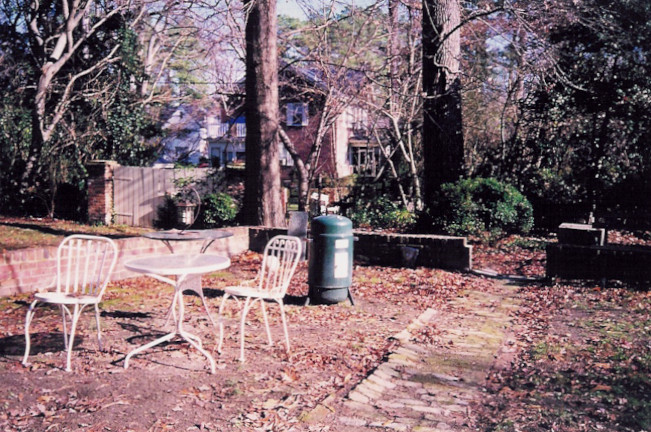
Below are pictures from Christmas, 2000, one of the few times we managed to all get together for the holiday.
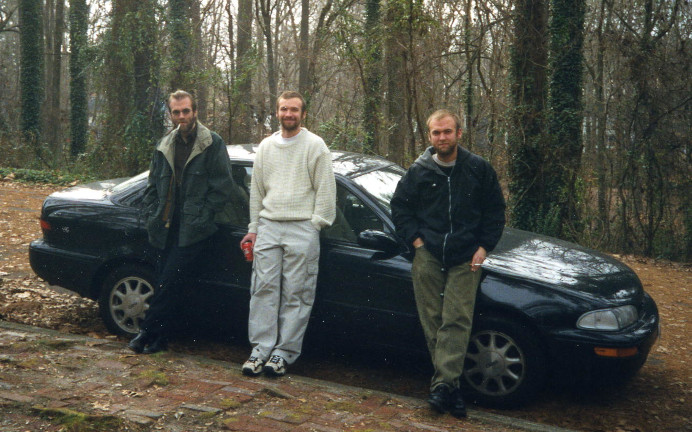

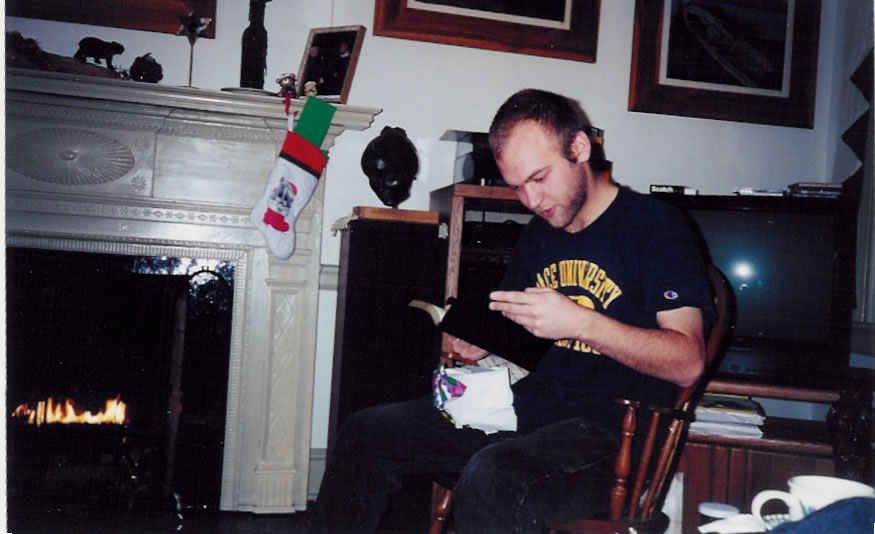



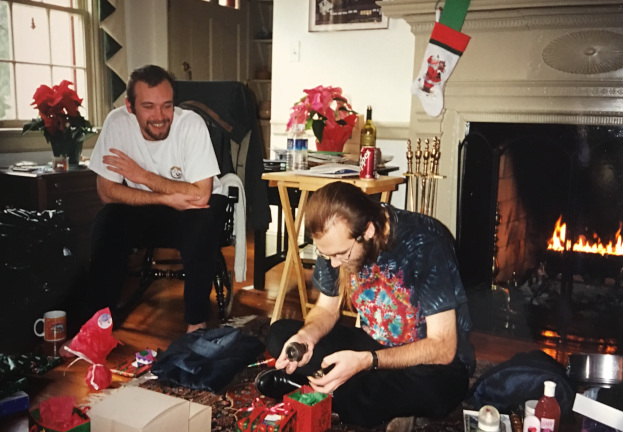
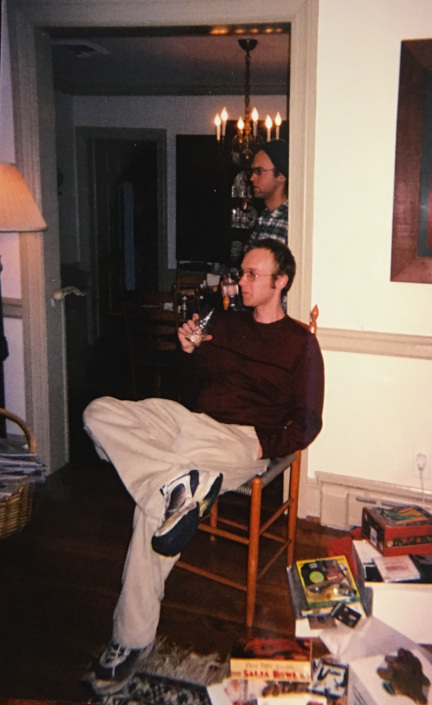
Life there was not without some adventure. We moved to Petersburg in 1999 and in the following January, the 24th and 25th, Petersburg had a massive snowstorm. At least it was massive by Virginia standards. The city got about 12 to 18 inches of snow followed by prolonged cold weather for the next week or so. Everything was shut down. The few snow plows never made it out of the garage and they probably would not have been up to removing the snow anyway. Our street was never plowed. And after a few days, Gene hand shoveled a path to the car and then hand shoveled a path for the car to get up the road to the crossing street, which by then had been cleared of snow somewhat by vehicle traffic. Power was out for a week, but we at least could keep our food cold in the snow, heat with wood in the fireplaces, and cook on our grill.
Here's Gene starting out to hand shovel a path to the car and then shovel the road to get the car out.
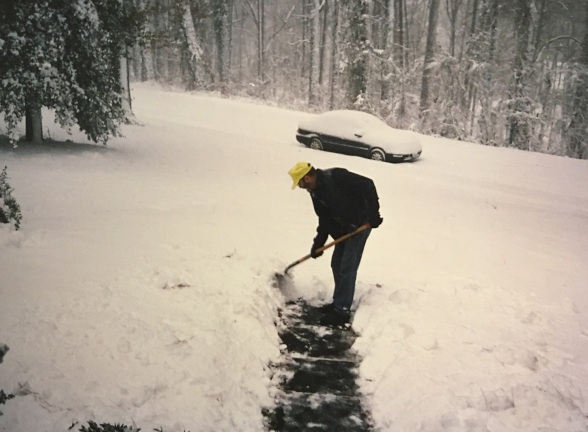
While in Oklahoma, we had been adopted by a stray dog, whom the kids named Benji. Benji made the trip with us to Virginia.
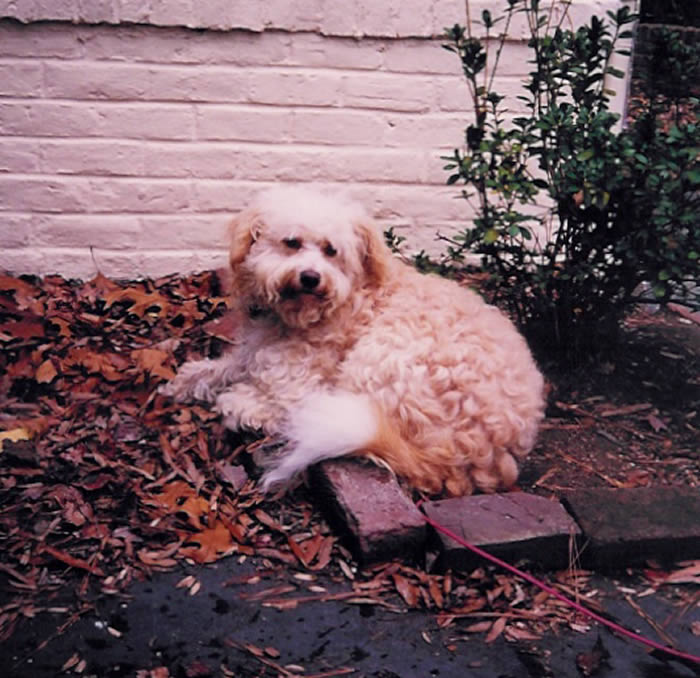

Benji was joined by a cat before long. The cat was one of a litter of feral kittens born under the bushes at the front of the library where Ellen worked. She brought him home fro the library and we named him "Book". The cat remained feral and spent the days outside but would meet Ellen on the porch when she came home from work and spend the evenings with us.
Some pictures of Book

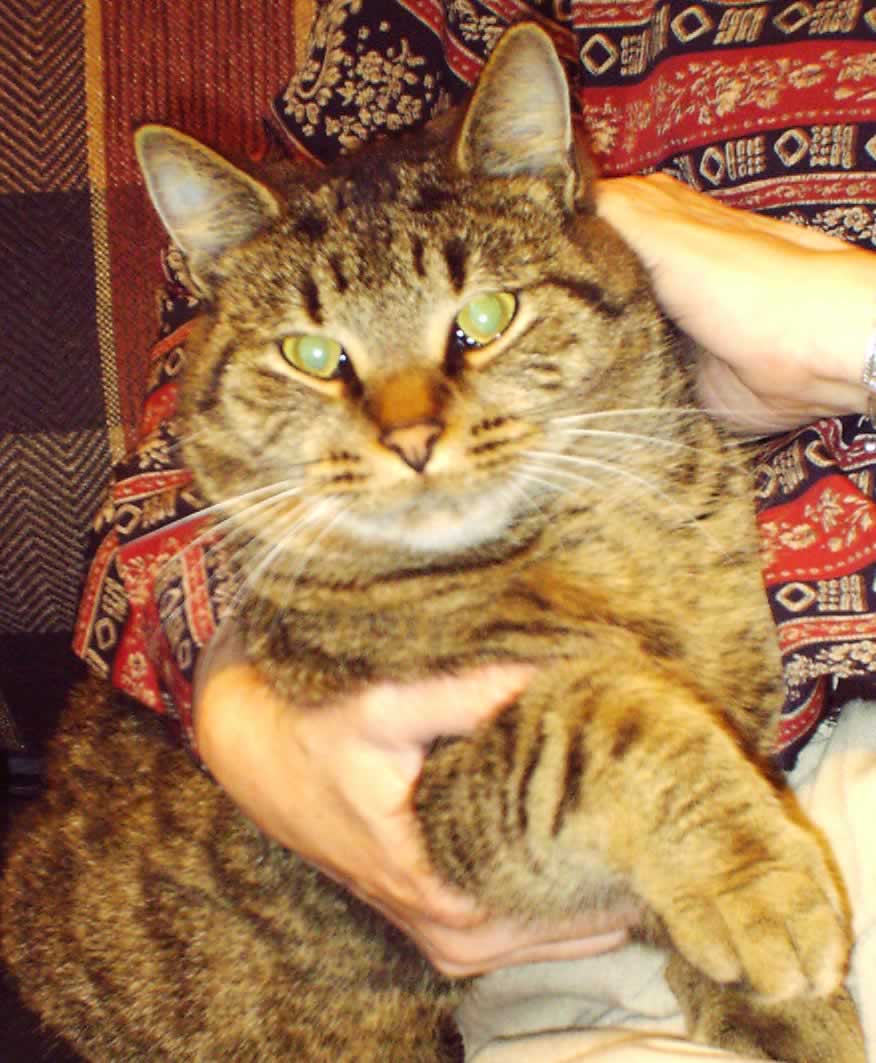
When we moved to California in 2003, we could not take the pets with us, as we were traveling by air in the summer and the airlines did not transport pets in summer. We arranged for them to be adopted before we left. We heard afterward from Benji's new owner and Benji seemed to be settling in just fine.
We also did some of the tourist things, visiting most of the James River plantations and some Civil War sites nearby. Gene was active with the Hampton Roads Ship Model Society and Ellen with the local chapter of the American Needlework Guild, where she first got seriously interested in needlework.
While driving around, we noticed some characteristic signs of a defunct chain restaurant called the Golden Skillet. We used to spend some idle hours driving about taking pictures of the ways in which these signs had been re-purposed.
Here are some pictures of Golden Skillet signs we found. The first is of an original Golden Skillet restaurant with its sign. The second picture is of a site converted to a pizza restaurant, Canellos. The third one is of "Hawk's BBQ" with a modified sign. And the last is of the "Hong Kong" restaurant.
